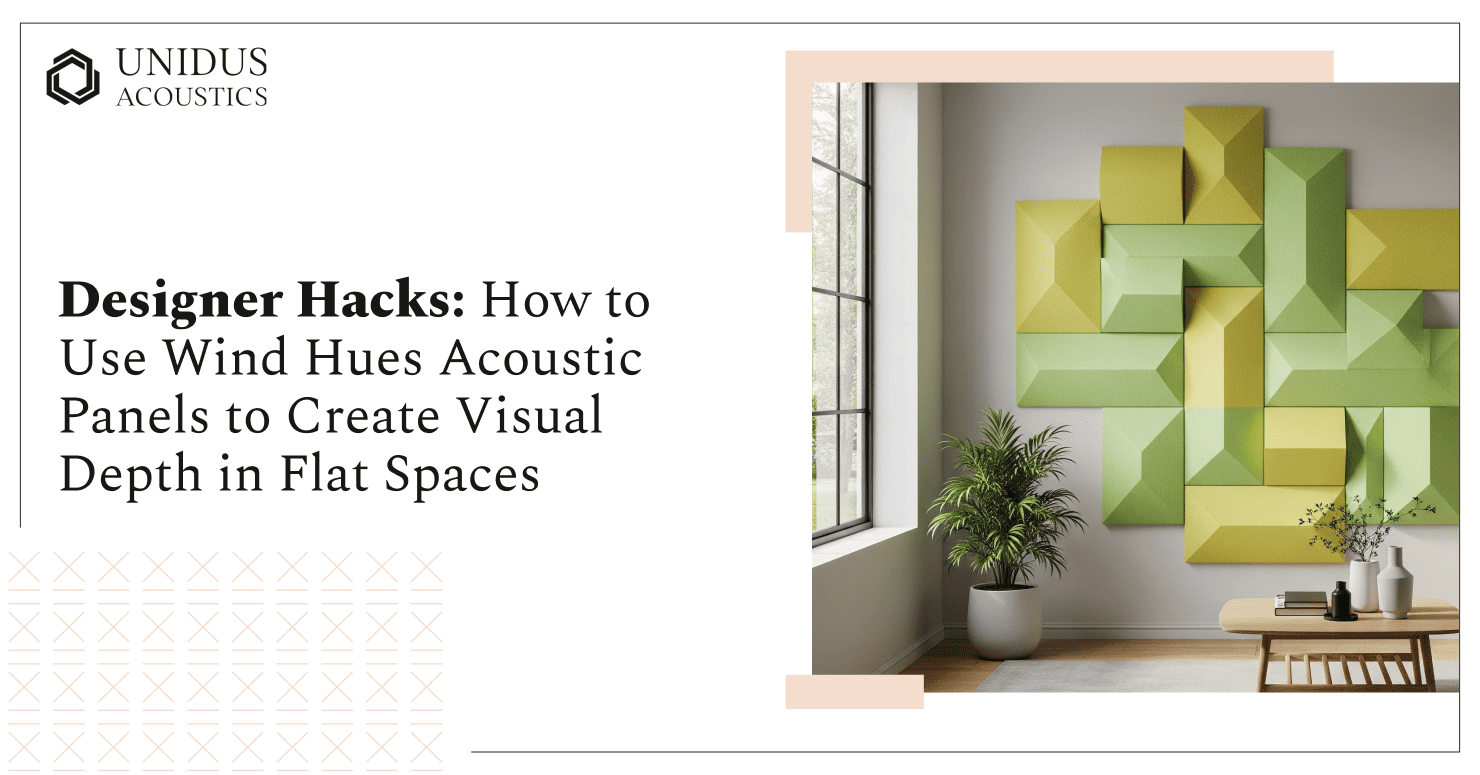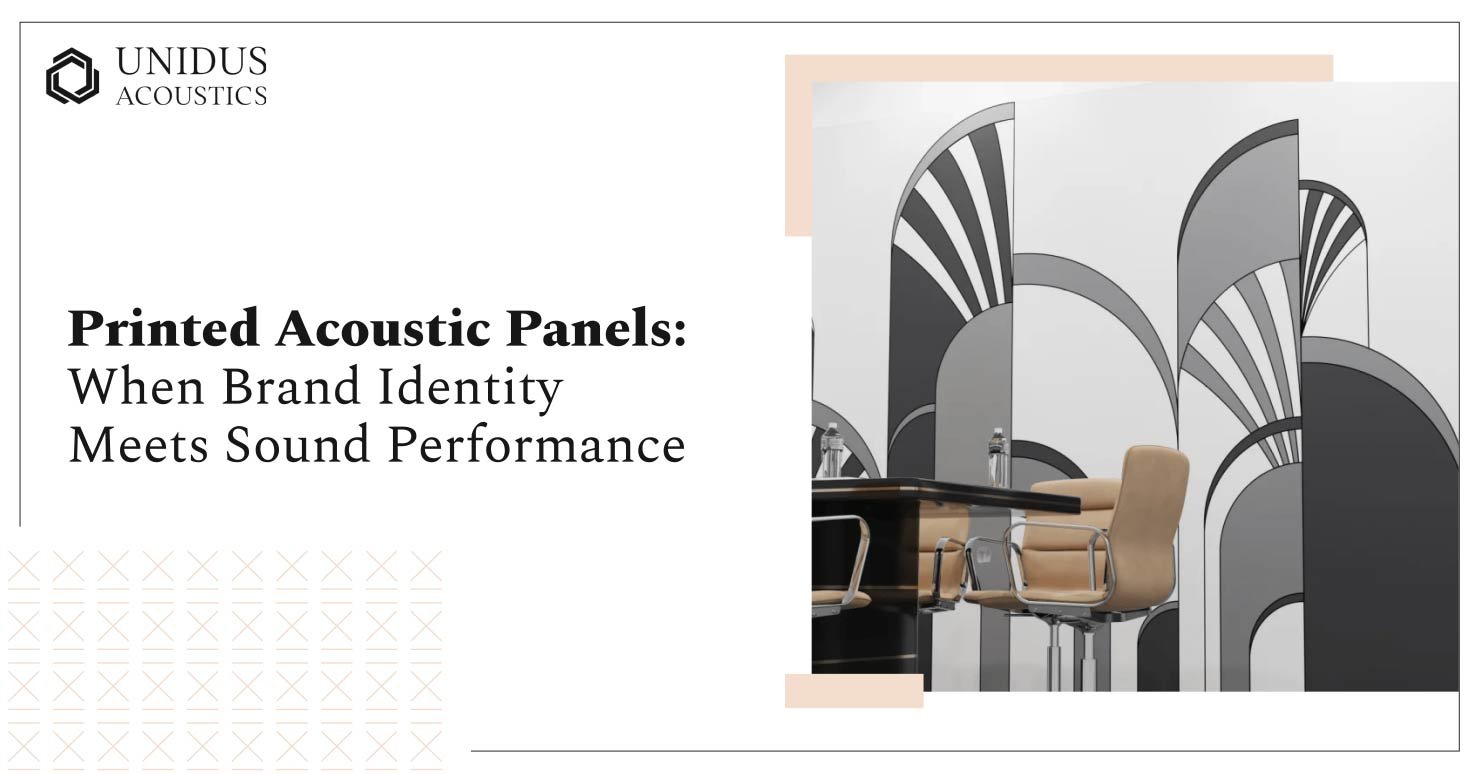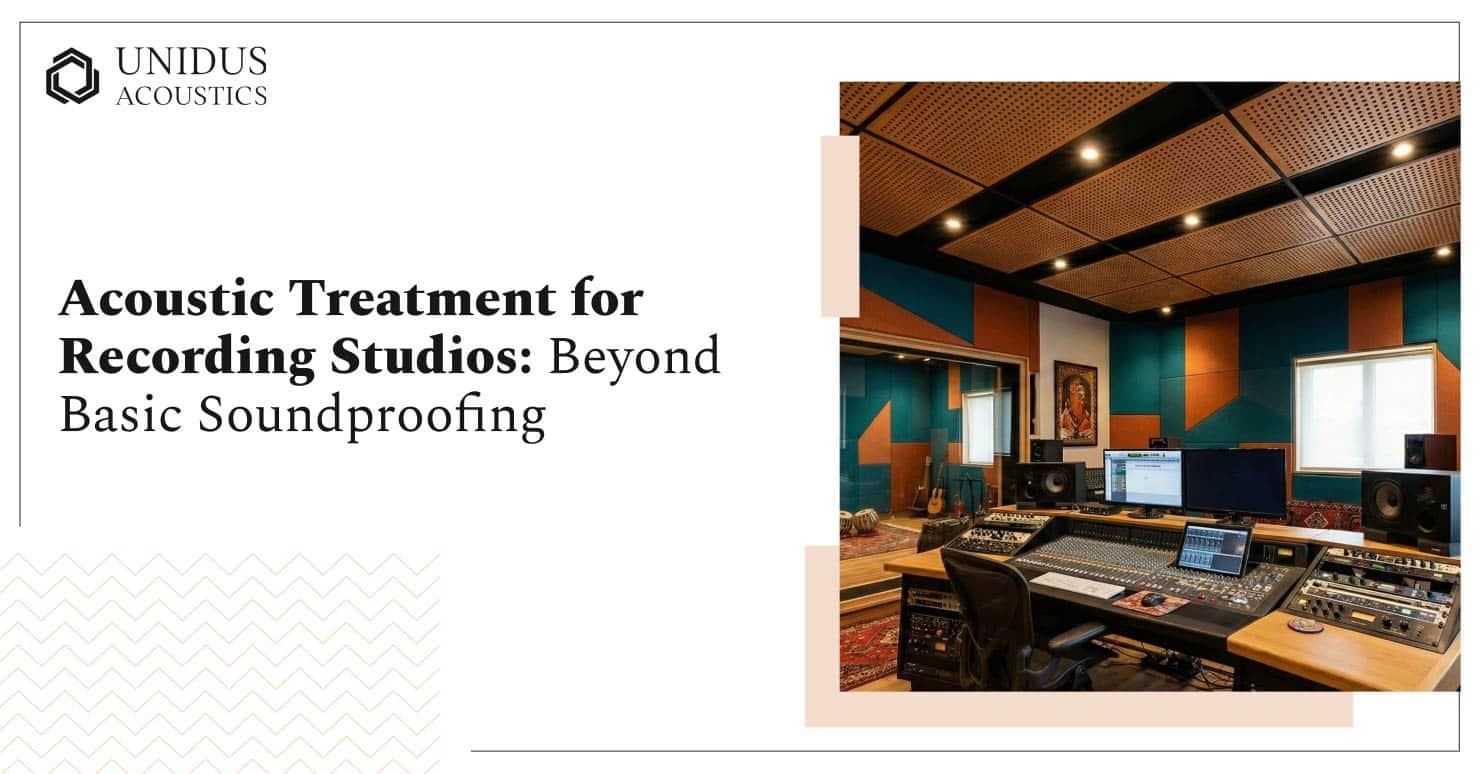“Why is the space so beautiful yet chaotic?” For many architects and interior designers, this question comes up frequently during client consultations.
While modern interior designs feature beautiful lines, open layout, and expansive surfaces, they often amplify sound problems. Flat walls and bare ceilings easily make spaces one-dimensional while creating uncomfortable echoes.
These concerns are valid, but also solvable with a simple solution that serves dual purposes – acoustic panels. They are customised acoustic solutions that control sound and add multi-dimensional visual layers to flat surfaces that otherwise look plain.
Among these, panels with wind hues offer a particularly satisfying result, as they balance all three – acoustic performance, refined design finish, and versatility.
With over 40 years of experience, Unidus Acoustics has been helping architects and design firms achieve this balance without compromise.
This blog shares practical techniques for using wind hues acoustic panels to transform flat echo-prone surfaces into visually engaging spaces that sound as good as they look.
How to Use Wind Hues Acoustic Panels to Elevate Flat Spaces?
Wind hues panels solve poor acoustics and lack of design depth across all commercial spaces, including offices, hospitality venues, and institutions. When applied strategically, they address echo, improve privacy, and add subtle layering effects that break the monotony of flat interiors. Below are some ways to use them effectively:
1. Choose Wind Hues Colours Strategically for Maximum Visual Impact
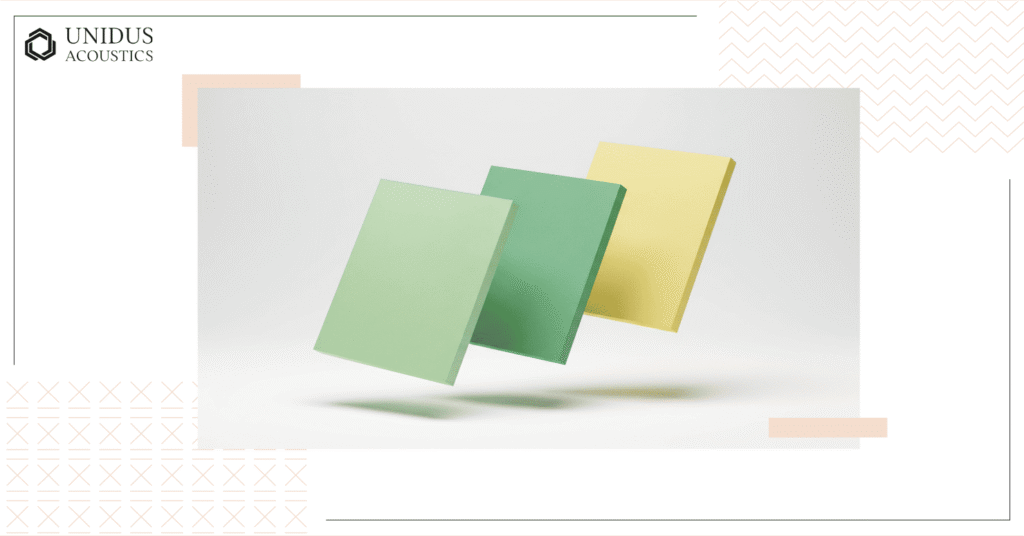
Wind Hues acoustic panels come in vibrant greens and bright yellows that create natural depth progression. The palette consists of apple green, bright yellow, tennis green, sunflower, bright green, meadow green, forest green, and lemon yellow. These colours work best when you pick shades that create visual flow across spaces.
Start with deeper tones at the bottom of the walls and move to lighter hues towards the ceiling. This technique mimics natural lighting patterns and makes spaces feel more energetic and dynamic.
Consider using three to five colours from the wind hues family. Let’s take a boardroom of a digital marketing company, for example. Move from forest green at floor level to medium olive green, then light lemon yellow near the ceiling. This gradient effect will break up large wall surfaces while maintaining the fresh, nature-inspired coherence of the wind hues palette.
The acoustic performance remains consistent across all colour options. Each panel delivers the same NRC rating regardless of the hue selected. This way, you can focus purely on design impact without compromising sound absorption.
2. Select the Right Acoustic Panel Type
Wind hues colours can be applied across various acoustic panel types. Wall panels work well with vertical surfaces where sound absorption is a priority. The fresh colours will help transform the plain walls into elevated design features.
For overhead applications, floating ceiling panels in wind hues can help create geometric ceiling effects while controlling reverberation.
Wind hues also work exceptionally well with fabric wrap panels and wooden panels, where the fresh colour palette brings out the tactile appeal while providing excellent sound absorption with nature-inspired visual impact.
3. Experiment with Strategic Acoustic Panel Placement
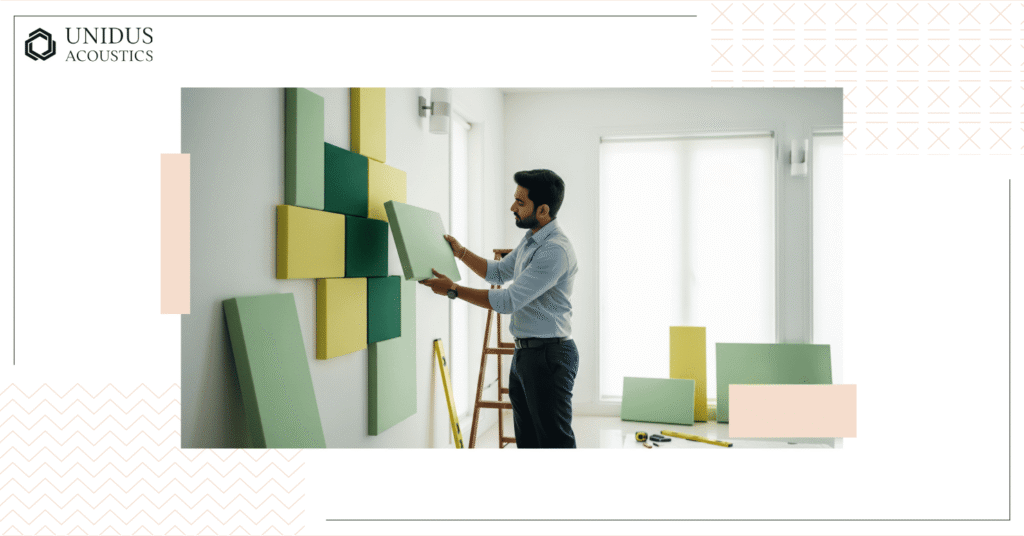
Flat spaces generally lack visual layers that make the environment enjoyable. So, instead of covering the entire wall uniformly, try staggered placement using wind hues colours. As in, alternate between horizontal and vertical acoustic panel placements, such as using tennis green and bright yellow, to create visual rhythm.
Mix larger panels in forest green and smaller panels in lemon yellow to establish dynamic patterns. In addition, leave intentional gaps between panels to display colour variations while delivering functional sound absorption.
This approach particularly works well in long hospitality venues, where wind hues give the hallways dynamic visual movements while reducing echo proactively. The fresh colour combinations guide the traffic flow naturally through spaces while creating a serene atmosphere.
4. Combine Wind Hues with Complementary Wall Treatments
Pair wind hues with other wall treatments like fluted panels for design variety. The bright greens and yellows complement natural wood textures beautifully.
Wellness centres may benefit the most from wind hues with fabric acoustic panels to create warm, calm, and nature-inspired spaces that reduce noise levels and instil harmony. The fresh colour palette works with the textured treatments and helps create a visual interest that feels organic and refreshing rather than overwhelming.
5. Integrate Lighting for Enhanced Dimensionality
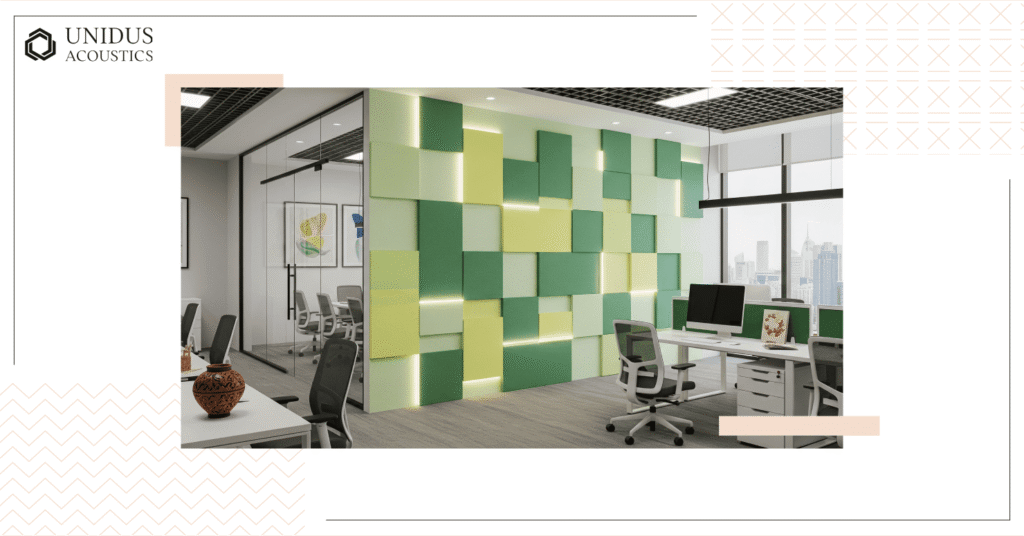
Wind hues acoustic panels’ vibrant greens and yellows subtly shift under various light conditions, creating mesmerising colour experiences throughout the day.
Installing spotlights or LED backlighting behind apple green or sunflower panels helps illuminate accent walls with depth perception.
Consider uplighting that washes colour onto ceilings to produce reflections that bring out the overall natural palette. Alternatively, use downlighting to instil dramatic shadows that emphasise the three-dimensional qualities of your panel arrangement.
Such an approach highlights wind hues as design features rather than hiding them as purely functional elements.
The acoustic properties will remain unaffected by lighting integration, provided you maintain proper clearances and avoid heat buildup that could affect panel materials over time.
6. Define Zones without Physical Barriers
Open-plan offices and hospitality spaces often struggle with undefined boundaries. Also, noise easily travels across these layouts, disrupting work and privacy.
Wind hues panels with acoustic screens can be used as subtle, semi-private dividers. The apple green and tennis green shades provide stylish visual and sound breaks without extensive construction.
You can install bright green panels behind reception desks, sunflower panels in breakout areas, and forest green wooden wall panels in co-working spaces or meeting nooks to create a layered effect in a collaborative environment. The uplifting palette of wind hues helps absorb unwanted noise while creating distinct zones that feel fresh and energising rather than closed off.
Educational institutions can use forest green panels around study corners or library spaces with bright yellow accents to define quiet zones. The flexibility allows spaces to adapt to changing needs while maintaining acoustic control.
7. Frame Architectural Elements
Use wind hues panels to frame existing architectural features like doorways, windows, or structural columns. The natural green tones help complement wood finishes while bright yellows create exciting contrasts with neutral surfaces.
Choose colour combinations that enhance rather than compete with existing finishes. For example, if your space features warm wood tones, select meadow green options that bridge between the wood colour and brighter accent walls in lemon yellow. This develops cohesion while adding the acoustic performance these hard surfaces lack.
8. Leverage Customisation for Project-Specific Requirements
Every project is unique and therefore needs tailored solutions. Wind hues panels can be customised in size and layout, enabling designers to solve acoustic challenges while maintaining visual concepts.
The eight-colour palette provides enough variety for most design schemes and maintains thematic consistency. Let’s take a corporate interior reimagination, for example. You can play with tennis green and forest green for professional spaces, yellow accents for creative zones, and use the full wind hues spectrum for co-working spaces to boost mood and productivity.
In the case of healthcare facilities, calming meadow or apple green shades work best, while hotels and restaurants can use brighter sunflower and lemon yellow, along with deeper olive and forest tones, to build a welcoming scene.
9. Apply Ceiling Treatments for Overhead Depth
Flat ceilings tend to bounce sound around, making spaces noisier than intended. With wind hues acoustic panels, you can minimise this effect. Instead of a plain, reflective surface, the forest and nature-inspired ceiling becomes a quiet design element that draws the eye upward and creates an impression of openness.
Consider acoustic ceiling baffles in alternating wind hues shades when the space needs both acoustic balance and a strong visual statement. These suspended overheads add a layered dimension while softening sound. The gradual shift in colour, from apple green to tennis green to lemon yellow, introduces a natural rhythm that enlivens the ceiling and brings character to the space.
10. Plan Installation Sequences for Professional Results
When you plan the sequence correctly, you can efficiently and quickly install wind hues acoustic panels in any commercial space.
Start with a corner using the darkest colour to establish reference points, then work outward using progressively lighter tones.
Mark panel positions with chalk lines before beginning the work. This will deliver even colour distribution and prevent alignment errors across the surface. For standard commercial spaces, installing Unidus Acoustics’ wind hues acoustic panels typically takes a day or two, keeping downtime to a minimum.
The lightweight construction of these eco-friendly acoustic solutions makes handling easier and installation faster.
Final Thoughts
After four decades of acoustic installations and having worked with different hues, here’s what we have learned – wind hues acoustic panels work best when designed as integral architectural elements, not add-on treatments.
The all-nature colour palette provides enough variety for dynamic visual depth while delivering consistent acoustic performance across all applications.
At Unidus Acoustics, we specialise in custom acoustic solutions that turn noise into harmony without compromising design intent. Our local manufacturing with strict quality control ensures aesthetic integration with on-time delivery.
If you want to order a free sample or need to solve an acoustic problem, you may talk to us.

